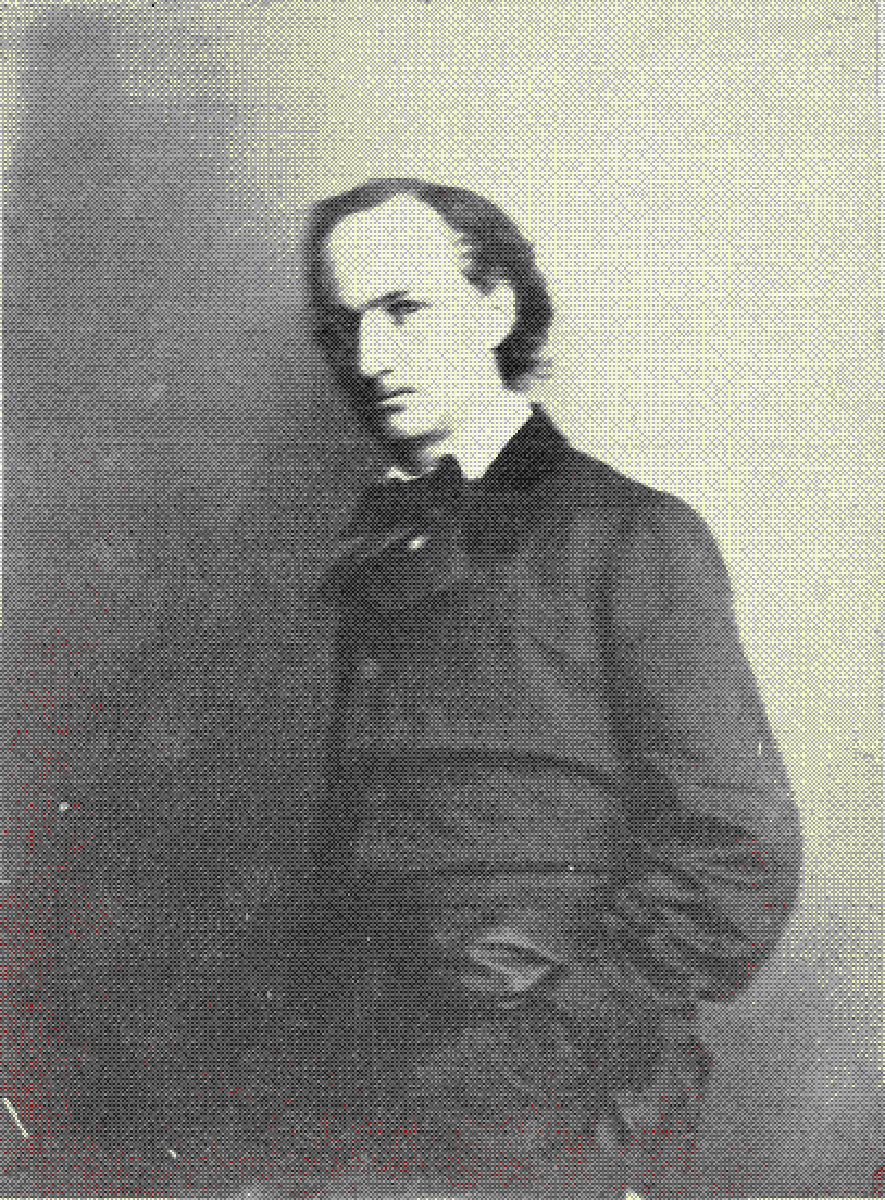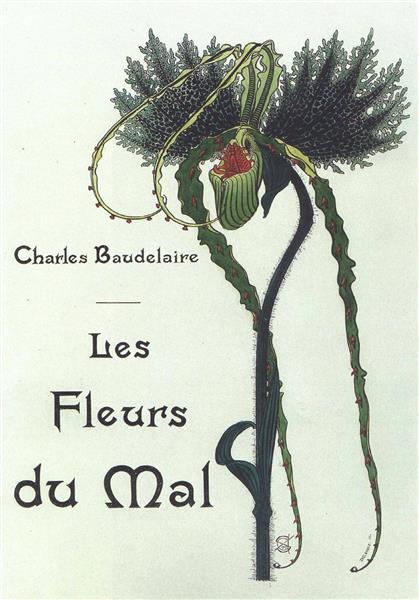
'Destruction' (1900) by Carlos Schwabe. Note the serpents emerging from the naked woman's nipples and the narcotic red poppies symbolising the conflating of death & sleep.
Les Fleurs du Mal — Charles Baudelaire

'Destruction' (1900) by Carlos Schwabe. Note the serpents emerging from the naked woman's nipples and the narcotic red poppies symbolising the conflating of death & sleep.
Les Fleurs du Mal — Charles Baudelaire
“You're such a Baudelaire fanboy" — what my friend said to me after reading this website's about page
Les Fleurs du Mal, translated into English as The Flowers of Evil, is the magnum opus of French Decadent poet Charles Baudelaire. Highly controversial upon its publication in 1857, this volume of lyric poetry—which dealt with themes relating to decadence, eroticism, suffering and the pursuit of an ideal world—was initially met with public outcry, resulting in the prosecution of Baudelaire for creating an offense against public morals and the censoring of six poems later known as les pièces condamnées (the convicted pieces). Only a century later, in 1949, would these six poems be reinstated in France.
After the succès de scandale of the first edition, a second edition (now considered definitive; I will refer to this version for the rest of the page) was published in 1861—lacking the six poems censored by the French government but with thirty-five new poems added to the collection, including works such as L'Albatros and Le Voyage which are today held as masterpieces.

Baudelaire photographed by Nadar, 1855-1857.
YOU GAVE ME YOUR MUD AND I HAVE TURNED IT TO GOLD—POETIC ALCHEMY: Les Fleurs du Mal is, in essence, an extraction of beauty from evil, of love from sin. Writing from a mid-19th century Paris undergoing the Hausmann rennovations, Baudelaire felt that modern poetry needed to reflect the ugly, conflicting and paradoxical aspects of life; thus was born the concepts of ‘Spleen’ and ‘Idéal’. ‘Spleen’ represents the profound unease, angst, even despair, that ‘blossoms’ from the frustration of an unfulfilled ‘Ideal’—a yearning for perfection, for the world of Platonic idealism where constraints fade away.
The most referenced figure in Les Fleurs du Mal is perhaps that of the alchemist: he who is capable of transmutating lead into gold. The poet, to Baudelaire, undertakes a similar duty: he takes the ‘mud’ of the city—its baseness—and transfigures it into beauty. Whilst their power is immense, so is their melancholy: they are misunderstood, ostracised, and cursed. Baudelaire pours the poet-alchemist's grievances into an exquisite, hermetic, sickly volume: The Flowers of Evil.
Les Fleurs du Mal is arranged into six thematically separate sections:
• Spleen et Idéal (Spleen and Ideal)
• Tableaux parisiens (Parisian Scenes)
• Le Vin (Wine)
• Fleurs du mal (Flowers of Evil)
• Révolte (Revolt)
• La Mort (Death)

Cover illustration by Carlos Schwabe.
“Comme d'autres par la tendresse,
Sur ta vie et sur ta jeunesse,
Moi, je veux régner par l'effroi.”
I became enamoured of Les Fleurs du Mal during my penultimate year of high school: it was part of the corpus I had to study for the baccalauréat de français. Baudeleaire and his wicked flowers were, of course, already known to me, but this was actually the first time I seriously read his work. What awed me was the complete mastery of the sonnet form; the clarity of his prose, lying somewhere between tortured and arrogant, and its intertexuality; the aesthetic and metaphysical aspirations.
“Others by tenderness and ruth
Would reign over your life and youth,
But I would rule by fear alone.”
It is said that if you don't know French, you have to read all the translations to get a good idea of Baudelaire. You can find a largely complete directory of his poems and their English translations at fleursdumal.org — a treasure of a website for all things Baudelaire. Whilst the webmaster has a penchant for Roy Campbell's translations, I do recommend reading as many versions as possible for a deeper, more nuanced understanding of Baudelaire's words.
Don't know where to start? Here are some of my favourite poems:
• Le Revenant (The Ghost)
• L'Héautontimorouménos (The Self-Tormentor)
• Don Juan aux enfers (Don Juan in Hell)
• L'Homme et la mer (Man and the Sea)
• Alchimie de la douleur (Alchemy of Sorrow) one of my favourite poems of all time.
• À une passante (To a Passerby)
• Les Métamorphoses du vampire (Metamorphoses of the Vampire)
Other famous ones:
• L'Albatros (The Albatross)
• La Beauté (Beauty)
• Une Charogne (A Carcass)
• Harmonie du soir (Evening Harmony)
• Le Voyage (The Voyage)
• Le Cygne (The Swan)
If you went ahead and read these poems, tell me which ones you like on my guestbook!
